Join the VIP Teacher Club!
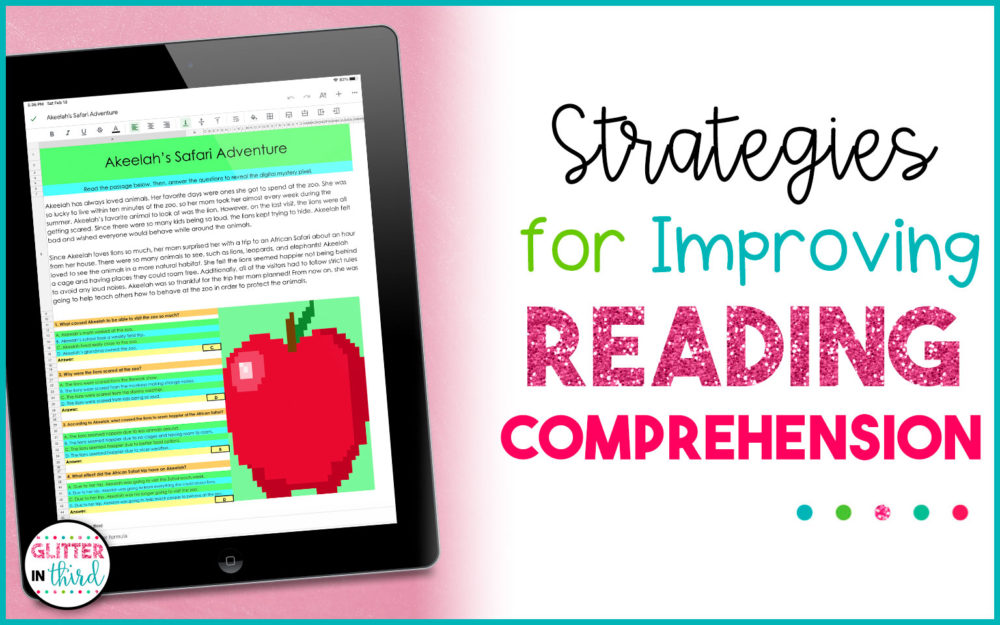
Looking for strategies to improve reading comprehension?!
There’s good news and there’s “not so good” news when it comes to teaching reading comprehension.
I’ll give you the “not so good,” first. 😉
There are so many different areas that play a role in overall reading comprehension and it can be challenging to come up with multiple activities and strategies to address them all.
Making predictions and inferences, summarizing and retelling, making connections and using prior knowledge, cause and effect, questioning, identifying the main idea, and even more.
All these different areas are so good for students to practice as they read, but I know it can be overwhelming for teachers.
But, the good news is there are many, many strategies out there and interactive ways that you can make teaching comprehension so much easier and fun!
And that’s what I want to share with you today. 🙂
I have 4 different strategies, including an activity bundle, I’m so excited to tell you about that will help improve reading comprehension!
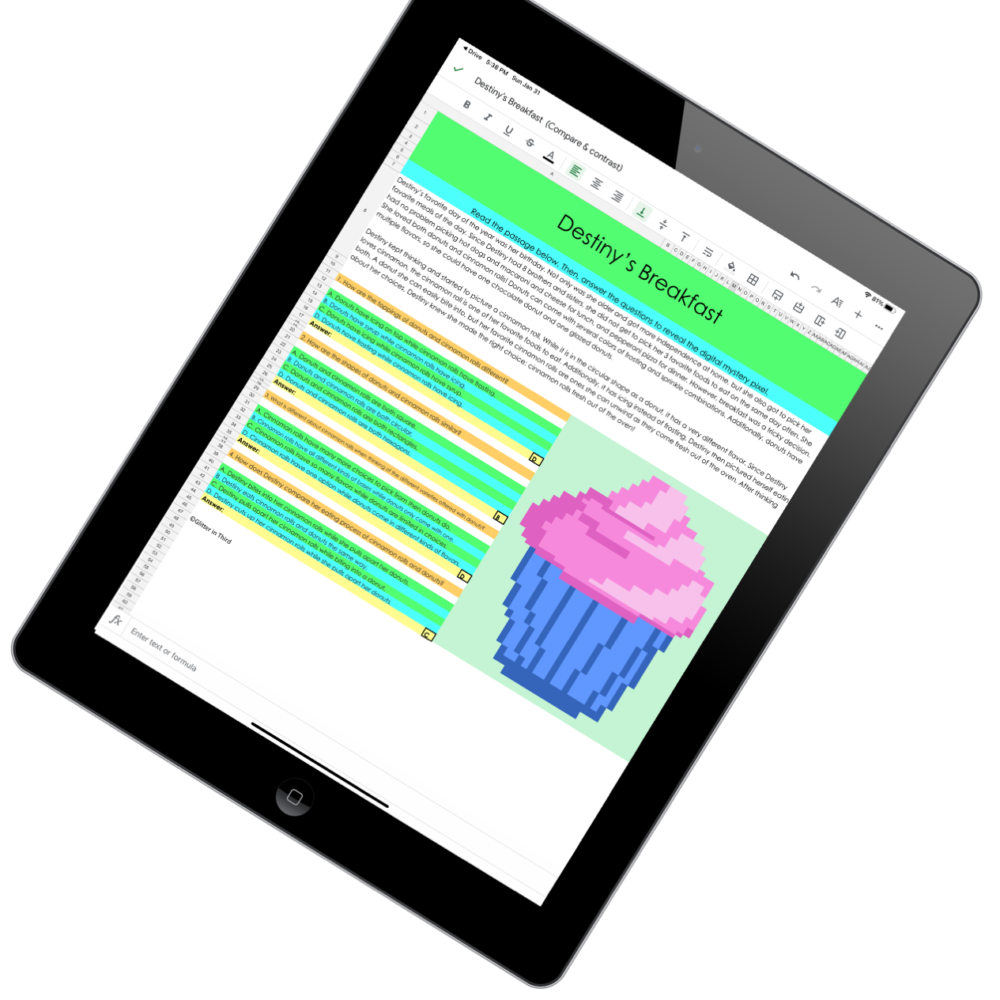
Remember when I said there are a ton of areas associated with reading comprehension?
This bundle is going to help you address over 10 of those areas and help you figure out which areas of comprehension your students are excelling in, as well as which areas they may need more practice!
When improving reading comprehension, it’s important to focus on a wide variety of skills and strategies.
If too few strategies are practiced while reading, it can really hinder a child’s overall understanding of a story and doesn’t allow for deeper connections.
For example, if obvious questions are the only form of quizzing that a student receives (Like what was the strongest house made of in The Three Little Pigs? Or, what made Pinnochio’s nose grow?), they’re missing out on all the other comprehension areas that build empathy, critical thinking skills, and vocabulary.
The skills included in this bundle are:
Within each resource in the bundle, you’ll get 5 different digital mystery pixels that focus on each specific skill.
For example, the Cause and Effect resource comes with 5 different mystery pixels, Character Traits come with 5 different pixels, and so on. There are 4 questions per passage, so 20 different questions to help you teach each area of comprehension!
Your students will love the pixels, if you haven’t already tried them, and the passages cover a wide range of fiction and nonfiction ideas. 🙂
All self-grading and no prep needed on your part!
You can learn more about this bundle here!
I also have a blog post that explains how digital mystery pixels work here!
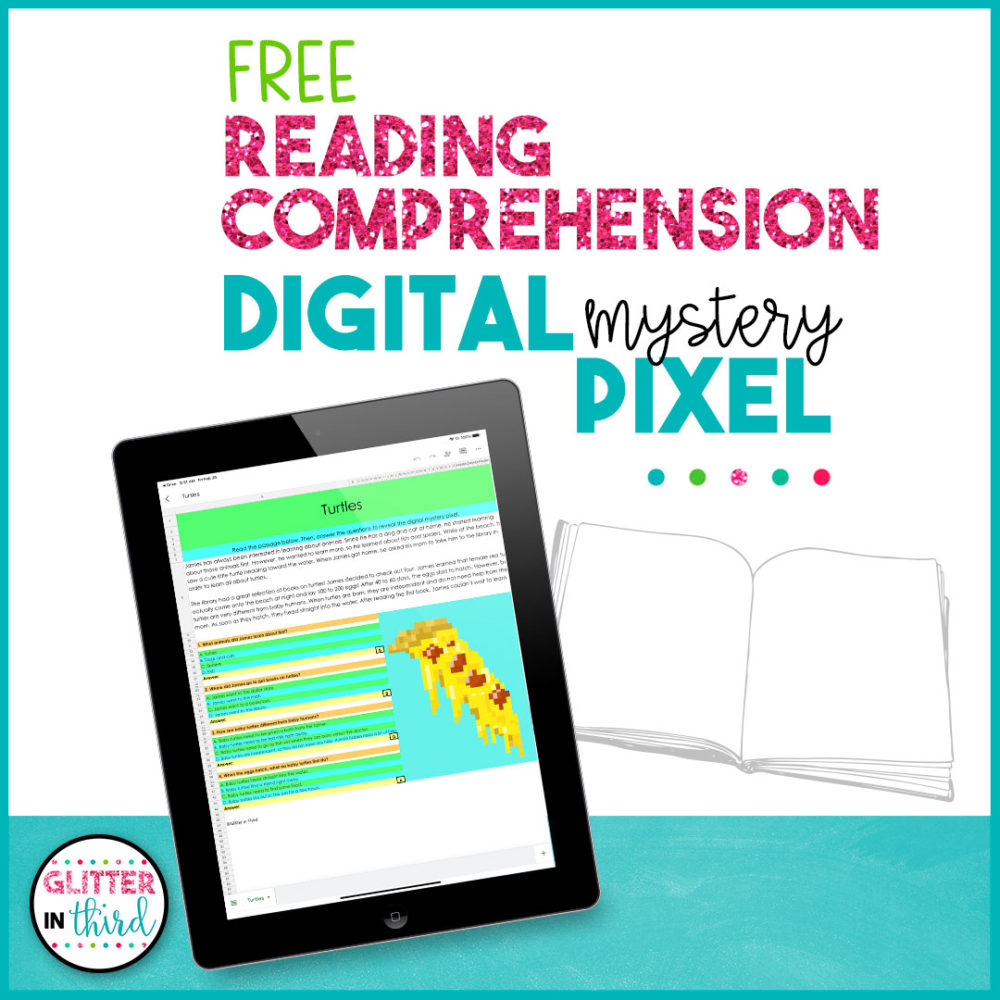
Not sure if a digital mystery pixel is for you? Make sure to sign up below to get a FREE reading comprehension digital mystery pixel sent right to your inbox!
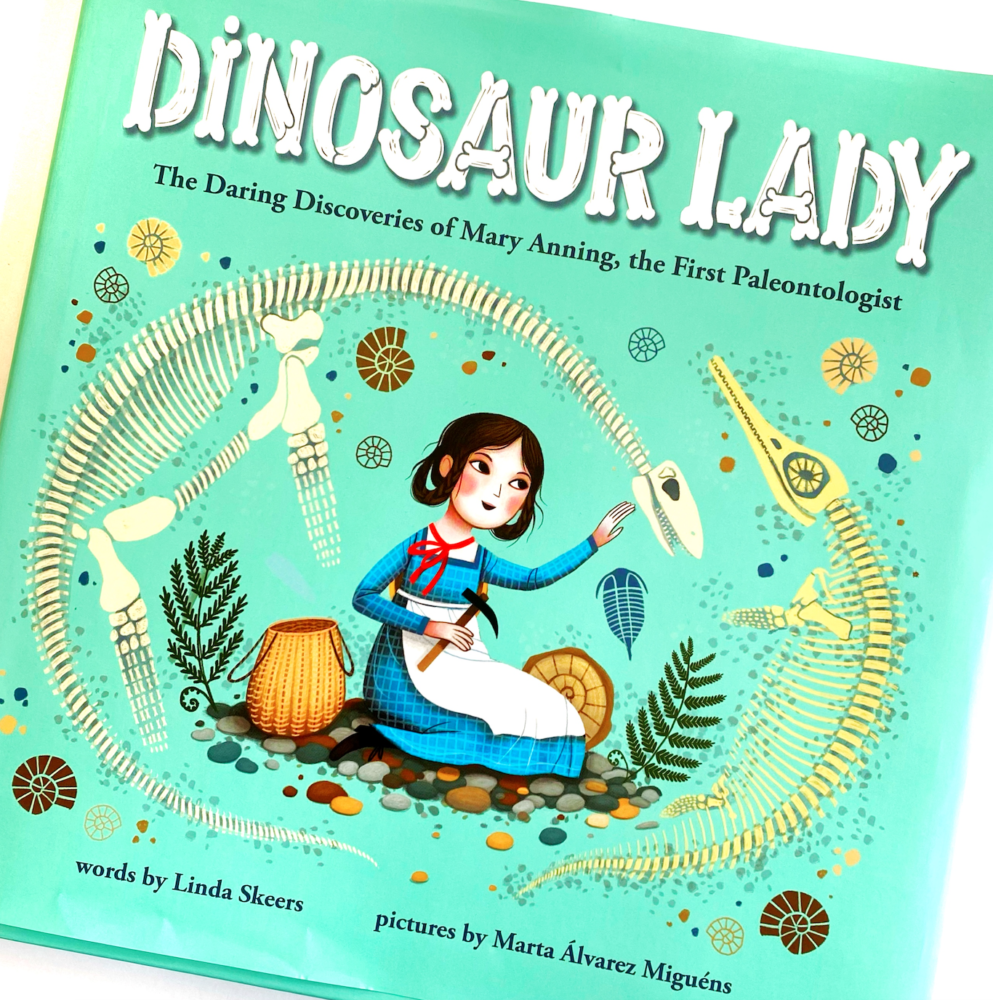
Yes, you read that right. 😉
Do judge a book by its cover before you read aloud to students.
Model how you read the title and summary of the book.
If it’s a picture book, skim through the pages and look at the illustrations to see who the characters are.
If it’s a chapter book, really discuss the cover and get your students talking about how it could be connected to the story.
I’m sure you’ve heard this strategy being used multiple times before, but always make sure you’re modeling it yourself before reading to your students.
It will help generate past experiences and make predictions while reading.
Another good practice before reading a story aloud is to have your students complete a KWL chart. K is for what is already known about the topic, W is for what they want to learn more about in regards to the topic, and L is for what they learned after reading.
This chart is especially easy to use for nonfiction books, but can also be used for fictional stories, too!
It could generate some discussion on social experiences and allow for deeper connections to be made with characters.
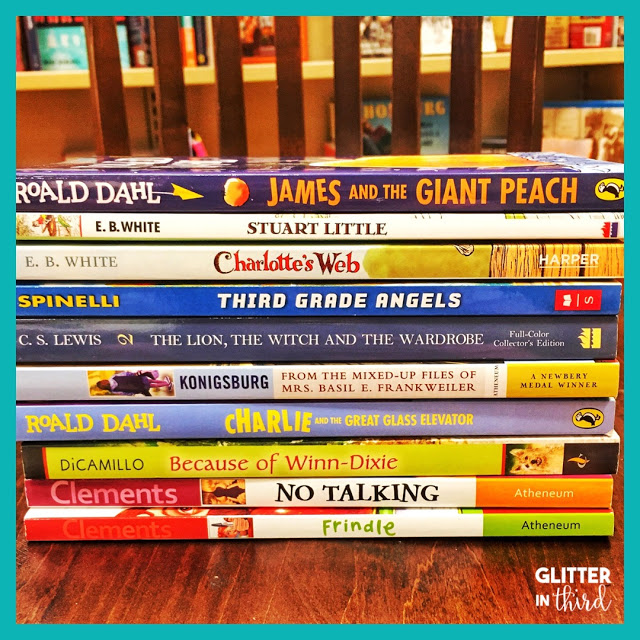
This is focused on a lot more in the K-1 grades, but can definitely be used as an intervention strategy in upper elementary grades.
Listening to your students read aloud can make a huge impact when it comes to determining what area they are struggling with in their comprehension.
For example, if you’re listening to a student who doesn’t read fluently, struggles with decoding, reads too quickly, or is even skipping words or lines of text, this is going to affect their ability to make inferences, create a main idea, summarize, or generally miss key points of a story.
You can also model ways to improve comprehension by encouraging students to consciously think about what they’ve read after each page.
We’re all guilty of daydreaming!
It’s okay to go back and re-read a page or two of the text in order to figure out what’s happening in the story.
This is a great strategy to use if your students do literature circles as well (by the way, I have a great blog post on choosing the BEST 3rd-grade books for literature circles. Read it here!).
I also suggest allowing students to choose books they are interested in themselves if you are working on improving comprehension.
It’s human nature to be more attentive and engaged in something you’re interested in, rather than a topic that bores you or is chosen for you.

It’s true! Reading and writing go hand in hand!
You can start by having your students answer more open-ended questions by writing about how a story made them feel, what they would have done if they had been the main character, if they’ve ever had a similar experience, what their favorite part of the story was, etc.
You can then move to more creative writing projects that allow students to write their own stories and go through the editing process with you or a classmate.
Peer review is so beneficial because someone is looking at the story with similar abilities. Peers are wonderful at asking questions and looking for clarification that’s needed in a story.
Improving writing skills will increase attention to detail in stories and improve comprehension areas such as character traits, points of view, figurative language, and sequencing.
Reading comprehension isn’t something that can just be acquired in a quarter or even semester of a school year.
It’s an ongoing practice throughout the entire year that requires multiple strategies and activities to address all the areas!
I hope these simple strategies and mystery pixels get you on your way to improving comprehension in all your readers. 🙂
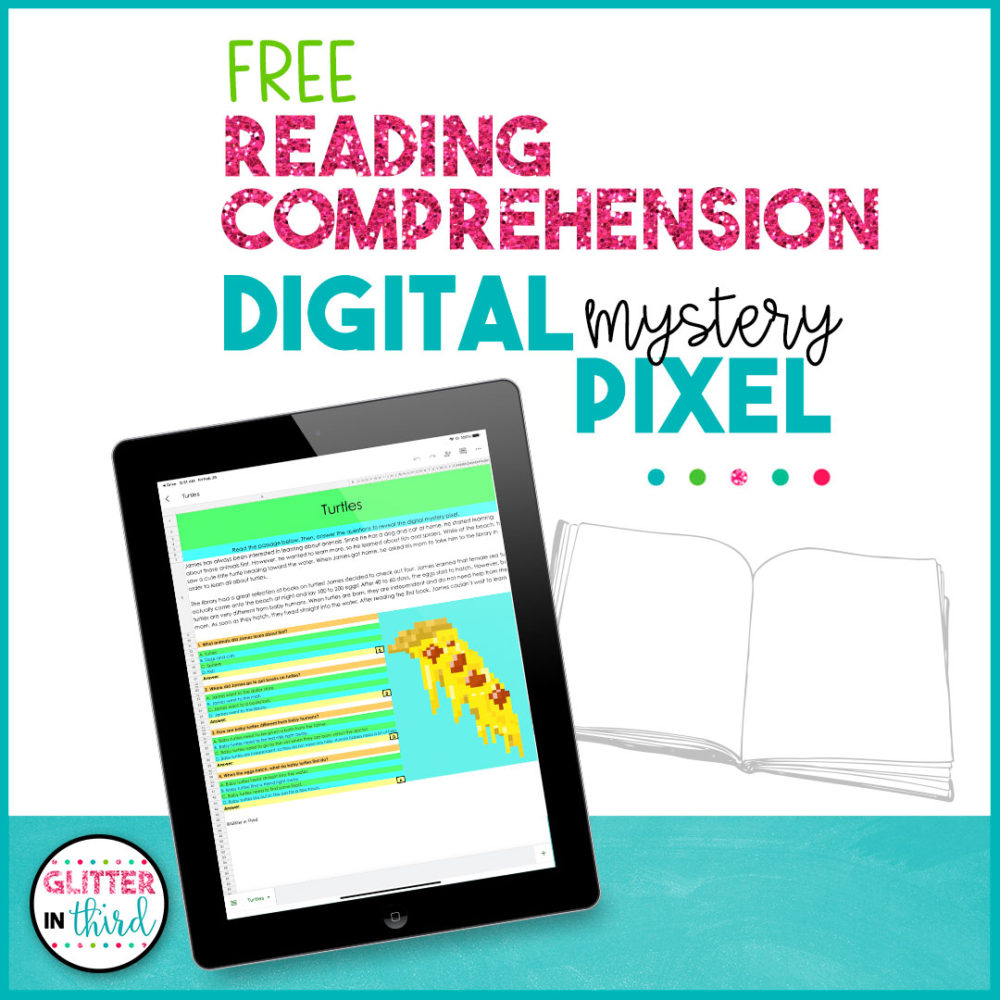
Make sure to sign up below to get a FREE reading comprehension digital mystery pixel sent right to your inbox!
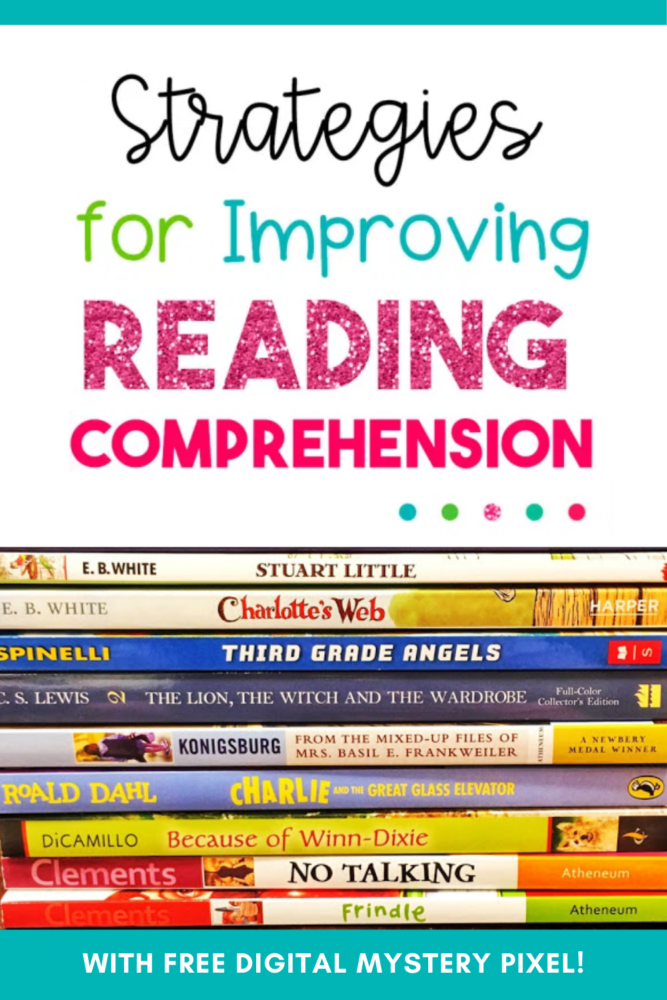

Hey there, I’m Kelly! I I love helping teachers save time with technology and resources so they have more hours in the day to spend with family and friends. Take a look around to find new ideas that you can implement in your classroom today!